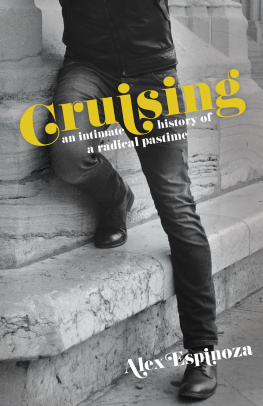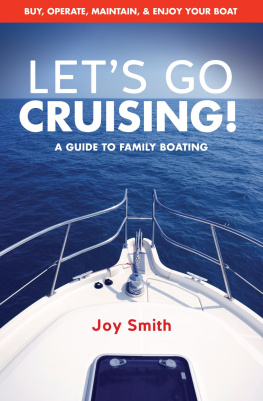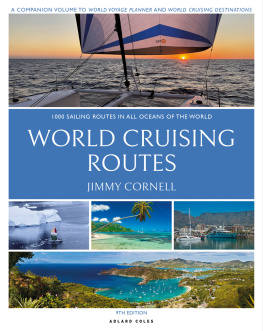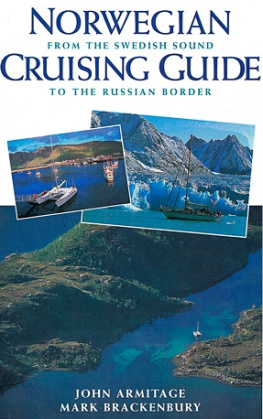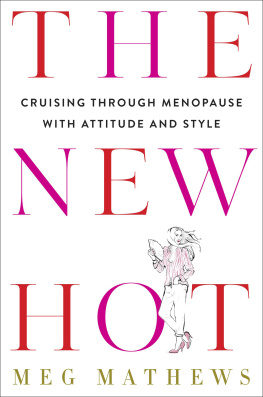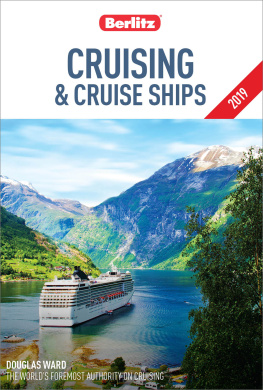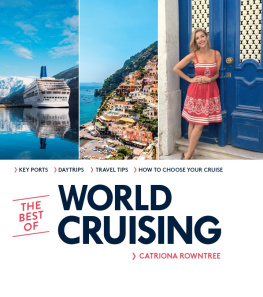
Cruising
an intimate history of a radical pastime
Alex Espinoza
AN UNNAMED PRESS BOOK
Copyright 2019 Alex Espinoza
All rights reserved, including the right to reproduce this book or portions thereof in any form whatsoever. Permissions inquiries may be directed to . Published in North America by the Unnamed Press.
www.unnamedpress.com
Unnamed Press, and the colophon, are registered trademarks of
Unnamed Media LLC.
Library of Congress Cataloging-in-Publication Data is available.
ISBN: 978-1944700829
Cover Design by Robert Bieselin
Distributed by Publishers Group West
Manufactured in the United States of America
First Edition
This book is a work of nonfiction.
Many of the interviews in this book were conducted via telephone, over email, through online forums, or in person. Some happened years before I began putting this manuscript together, others while I was deep into my research. In order to protect the individuals privacy, names and biographical information have been changed or slightly altered.
The promiscuous homosexual is a sexual revolutionary. Each moment of his outlaw existence he confronts repressive laws, repressive morality. Parks, alleys, subway tunnels, garages, streetsthese are the battlefields.
John Rechy, The Sexual Outlaw
Table of Contents
Cruising
Prelude
Y ou have to practice patience when you cruise. You need to be alone for long stretches, often looking for something that isnt always there. It takes time to cultivate this skill. It takes time to learn how to identify the cracks, to see the openings, to recognize the breaks and tears that exist in the ordinary. Its meditative. The driving around and around in circles, past the same spot. The watching. The waiting. It teaches you how to be still in the moment, how to feel Earth spinning on its axis, how to sense the gravitational pull of the ground beneath your feet. In those moments of feeling and being anonymous, fleeting as they were, I learned about patience and perseverance.
It reminds me of writing. Both require a level of isolation, of quiet solitude. Both ask you to reach deep inside, to look inward, to sit with your memories and thoughts while everything hurls forward and you wonder: What is the pursuit all about? What will be revealed at the end? How will the color of things change when one comes out of the journey? It is a moment that captures something unnamable but feels crucial for survival. Its an impulse so strong it boils the blood, alters time and reality and sense. And the only way one gets better at both is by returning to it, doing it over and over, again and again.
Cruising taught me how to cultivate a sense of confidence. I learned how to walk a little more slowly in the world. I learned how to watch and wait for the revelations, for the climax, if you will, to come.
Cruising made me write.
An Introduction to the Art
T he only time the word cruising was used when I was growing up was when my brothers and cousins and uncles talked about taking their low riders out to drive up and down Colorado Boulevard, Hacienda Avenue, Whittier Boulevard, or any number of streets where young Mexican Americans gathered on Friday and Saturday nights around the San Gabriel Valley.
Lets go cruising, one would say, and theyd pile in a car and be off, gone for hours.
It was less about the destination and more about the journey, Id come to find out later. Cruising wasnt about where you were going. Rather, it was about how you were going, about what you looked like when you were going, about what car you were riding or driving in. My brothers and their friends ironed their shirts when they went cruising. They shaved. They dabbed on cologne and combed their hair. They made sure to look good when they went out. It was about taking your time, scoping out the scene, getting the lay of the land and, of course, picking up girls. Cruising the streets had as much to do with seeing as it did with being seen. Growing up a closeted homosexual, navigating a culture that encouraged hypermasculinity and patriarchy, I would learn to live and operate in both worlds, learn the customs and traditions necessary for survival in both spheres. I would also learn to decipher the coded behavior and language of both, especially when it came to that word: cruising.
Its hard to trace exactly how the term became associated with anonymous sexual encounters in the gay community. People cruised in their cars. My brothers and their friends cruised for chicks. All of these involve, to some degree, the act of leisurely crossing and recrossing the same place. They involve the acts of seeing (and being seen), of pursuing (and being pursued). Yet no one knows exactly when or how the word became synonymous with secret sexual encounters. We know the word comes from the Latin word crux, or cross.
Cruzate, my mother would say when we passed a church.
I would make the sign of the cross.
Vamos a cruzar al otro lado, my relatives in Tijuana said when they crossed the border from Mexico into the United States.
Once an airplane reaches cruising altitude, the seat belt sign is turned off; you are free to move about the cabin, to stretch your legs or go to the bathroom, to wander up and down the aisle aimlessly as you try ridding yourself of that restless, cooped-up feeling.
As a kid, I knew about cruise ships, of course. Those long, extended sojourns on luxury liners to exotic ports of call. I remember watching The Love Boat, getting lost in the personal intrigues of passengers as they sunned themselves on deck chairs and played shuffleboard. There were stops along the wayMazatln, Acapulco, Cabo San Lucasand people had affairs and sometimes even fell in love. It was a journey of discovery but also of reinvention; you could become someone else.
In The Autobiography of a Thief, Hutchins Hapgood writes of Victorian England, It was in the days when every woman had to possess a fine silk handkerchief; even the Bowery cruisers (street-walkers) carried them. This remains one of the earliest printed instances where the word is linked to sex. The historian Timothy Blanning traced the definition of cruising, as it pertains to the act of clandestine sexual encounters in oftentimes public places, to the gay community. It is derived, he found, from the Dutch kruisen, which, in the simplest terms, means to cross or intersect. But kruisen also means to breed or to arrange the mating of specific plants or animals.
The idea seems to hint at a word whose use signals to others in a subculture the intent of action, the adoption of a code only those in the know were aware of, similar to the phrases light in the loafers or friend of Dorothy, the latter dating back to World War II (at least) and both operating as veiled signals for gay men. Though the terms have been co-opted by the mainstream, in often pejorative ways, this wasnt always the case. The average person in midcentury America would think nothing of such a phrase upon overhearing it in the course of a conversation, but closeted homosexuals used such language to maneuver, survive, and engage in sexual activity at a time when being gay meant being a criminal, a stain on society.
But how did it start? What led to gay mens urge to engage in public sex? It is difficult to trace the history of sex in public places simply because everyone has done it
Next page
